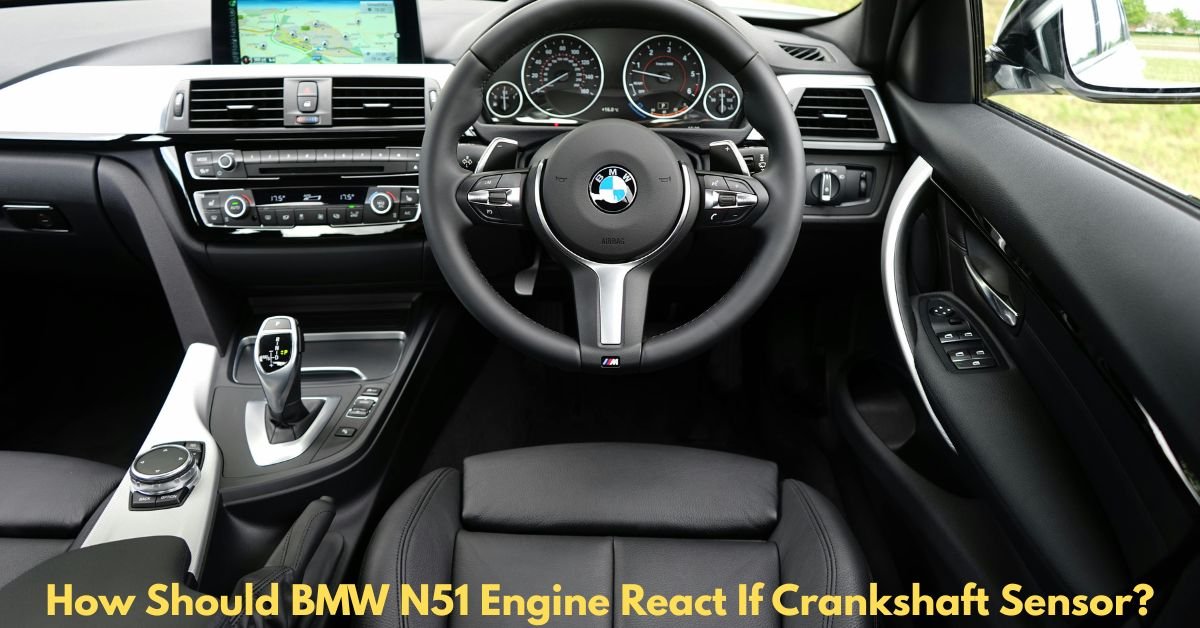The BMW N51 engine, a variant of the popular N52 series, was designed to meet SULEV (Super Ultra Low Emission Vehicle) standards in certain U.S. states. It powers vehicles such as the BMW E90 3-Series and E60 5-Series. While generally reliable, like any modern engine, it relies heavily on various sensors to operate smoothly and efficiently. The crankshaft position sensor is one such crucial part.
But what happens if this sensor fails? How should the BMW N51 engine react—and more importantly, how can you recognize and address the issue?
How Should a BMW N51 Engine React If the Crankshaft Sensor Fails?
What Does the Crankshaft Position Sensor Do?
An essential component of the engine’s timing system is the crankshaft position sensor (CKP sensor). It monitors the exact position and rotational speed (RPM) of the crankshaft and sends this information to the engine control module (ECM or DME in BMW terminology). This data is used to:
- Control ignition timing
- Determine fuel injection timing
- Enable the engine to start
- Synchronize the camshaft with the crankshaft
In short, without accurate crankshaft data, the engine can’t run properly—if at all.
Signs of Crankshaft Sensor Failure in the N51 Engine
When the crankshaft sensor begins to fail or goes completely bad, the N51 engine will exhibit a number of symptoms. Here’s how it might react:
1. Engine Cranks But Won’t Start
A no-start situation is among the most prevalent symptoms. Since the DME relies on the crankshaft sensor to determine when to send spark and fuel, a failed sensor will prevent proper combustion timing. The engine may crank endlessly without actually starting.
2. Stalling While Driving
The engine may abruptly stall if the sensor occasionally malfunctions. If this occurs while driving, it might be quite risky. The DME loses track of the crankshaft position, and without this data, it shuts down engine operation as a fail-safe.
3. Rough Idle or Misfires
If the sensor is malfunctioning but not completely dead, it may send inaccurate data. This leads to poor ignition timing and fuel delivery, resulting in a rough idle, engine vibrations, or even cylinder misfires.
Must Read: How To Reset Mazda Infotainment System?

4. Check Engine Light (CEL)
BMW’s onboard diagnostics system will usually catch a faulty crankshaft sensor and log fault codes. A CEL will often appear with codes like P0335 (Crankshaft Position Sensor “A” Circuit) or related variants.
5. Reduced Power Mode (Limp Mode)
To protect itself, the N51 engine may occasionally go into limp mode. This limits performance and allows you to drive the vehicle minimally until the issue can be resolved.
Why Does the N51 Engine React This Way?
BMW considered pollution and safety when designing the N51 engine. When a key sensor like the crankshaft sensor fails, the engine control unit (ECU) has to make a quick decision:
- If the sensor failure is detected immediately upon start, it will prevent the engine from starting to avoid damage.
- If the sensor fails while running, the ECU may rely briefly on the camshaft sensor (in some emergency strategies) but will typically shut down the engine to prevent serious misfires or internal damage.
Diagnosing and Replacing a Faulty Crankshaft Sensor
If you suspect a bad crankshaft sensor, the first step is to scan the vehicle with a BMW-compatible OBD2 scanner. Fault codes will often point directly to the sensor or related systems.
Next steps may include:
- Inspecting the wiring and connector to the sensor
- Checking for oil or coolant contamination around the sensor
- Testing the sensor’s resistance or signal output
Replacement of the sensor is relatively straightforward on the N51 engine but may require removing other components for access. It’s often located near the rear of the engine block, underneath the intake manifold.
Final Thoughts
The crankshaft position sensor is a small but critical component in the N51 engine’s operation. When it fails, the reaction is immediate and unmistakable—no start, stalling, poor performance, and fault codes. BMW’s engineering is designed to protect the engine from damage in such cases, but it’s crucial for owners and technicians to respond promptly.
If you own a BMW with an N51 engine and experience any of the above symptoms, don’t ignore them. Diagnosing and replacing a faulty crankshaft sensor early can save you from bigger headaches down the road—and get your Ultimate Driving Machine back on the road where it belongs.
